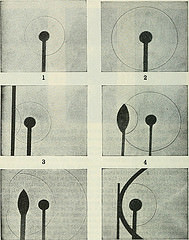Physical Therapy Programs

The field of physical therapy, the goal is to promote optimal functionality and health by applying techniques and skills that will help in the maintenance, development and helping to restore functional ability. Physical therapy programs are categorized within the allied medical profession.
According to the American Physical Therapy Association, the only programs that are recognized and accredited with the Commission on Accreditation in Physical Therapy Education are masters and doctorate degrees programs.
The 2008-2009 version of the Occupational Outlook Handbook states that physical therapy programs consist of various science courses such as chemistry, biology, mathematics, social science and physics. Afterward, more specialized courses in neurology, physiology, manifestations of disease, human growth and development, biomechanics, human anatomy, supervised clinical experience and therapeutic procedures.
After going through a program like this, the physical therapist is equipped to handle various ailments, injuries and physical problems. The therapists’ knowledge of the human body and assessment techniques will help them focus on the injury and help the patient recover and heal from their ailments.
Helping patients recover from their injuries and helping to relieve pain are just some of the things that a physical therapist will try to do for their patients. Helping the body heal and increasing the patient’s functional strength are some of the other goals that a therapist will help facilitate. Through careful testing, documentation, case history and patient feedback, the therapist will design a physical therapy program that will help the patient recover from injury and live a higher quality of life, pain free.
During the initial interview, the therapist will take a full patient history and have the patient explain various past injuries, medications, previous illness, etc. The therapist then conducts assessments and testing to try to establish and pinpoint where the problem is and how to go about treating the problem. After all this data is collected, the therapist will set up a treatment plan and will begin treatment accordingly. After a few weeks, there is a retesting session, where the results are compared to the initial interview and compared if there are improvements or not. If there is no improvement, then a new treatment plan must be establish to try to get better results.
A typical therapeutic session will consist of various modalities of heat or cold therapy, light therapy, hydrotherapy, electrical or ultrasound therapy etc. It is up to the therapist, which modality will best suit and help the patient recover faster. Duration and frequency of the treatments are dependent upon what the therapist has planned and how the patient is responding to the treatment. There should always be an open line of communication with other healthcare practitioners involved with the patient’s care. There are sometimes physicians, coaches, team managers, nurses etc that are also involved with the patient’s care.
Accurate documentation and periodic assessment is the best way to track your patient’s progress. If your patient is not responding to the current treatment program, change it and see if those changes are effective. Sometimes you need to adjust and readjust to get the body to recover and begin the healing process. Sometimes diligence and hard work is the only way to get great results with your patients.
Nitin Chhoda has a blog on physical therapy marketing. Get a free physical therapy marketing system with a DVD, book on physical therapy marketing and over 8 hours of audio at marketing physical therapy and forever change the way you market your clinic.
More Physics Articles
